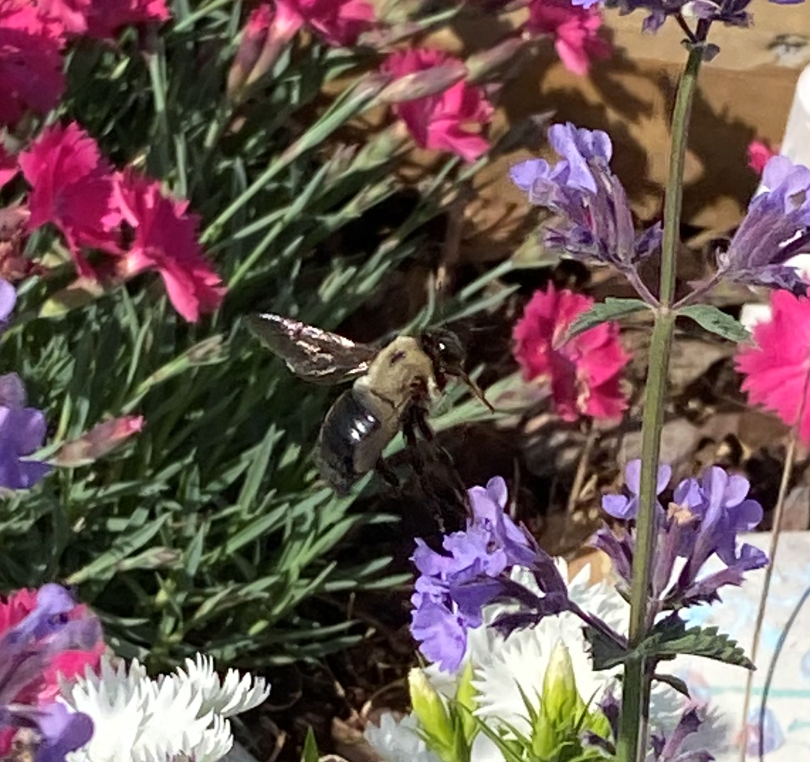Creating a pollinators’ garden is an easy and inexpensive way to start an adventure in gardening. Anyone with a desire to grow plants and affect the environment in a positive way can grow a pollinators’ garden.
These are things to consider before starting the garden:
- Choose an area open to activity conducive to pollinating; Be sure you have sunlight and a way to water new plants.
- Identify the plants to be planted-Include nectar plants and host plants.
- Prepare to use a little labor in preparing the area for the garden.

Pollinator plants are just as the name describes, plants that allow bees, butterflies, birds, and other insects to populate the surface of the plant so that pollen can be extracted and placed in a different location allowing for pollination of other plants.
Pollinator plants also include host plants for some insects-Milkweed is an example of a host plant that is needed by the Monarch butterfly. Monarchs will only lay their eggs on milkweed, and their caterpillars feed only on milkweed during this phase of their development.
In Georgia the best pollinator plants are native to the area. This allows the activity needed to succeed with the native bees, butterflies, birds, beetles, and other Georgia native critters.
Some plants that are good pollinator plants for spring and summer include:
Winter Honeysuckle, phlox, Spiderwort, Wild Indigo, purple coneflower, phlox, and milkweed.
For blooms from summer into fall, consider Bee Balm, Catmint, mountain mint, Cosmos, and parsley.
For a detailed list of trees & shrubs, you can reference the UGA Extension Publication “Selecting Trees and Shrubs as a Resource for Pollinators: https://extension.uga.edu/publications/detail.html?number=B1483
Planting pollinator gardens is best done in the fall or winter. This gives the plants a good opportunity to take root. But with the right conditions, a pollinator garden can be started any time of year.
Due to the nature of some of the creatures that pollinator gardens attract, place them in an area without a lot of foot traffic. A pollinator garden is about observation, from the perspective of the visitor, and not about interaction with any species.
To begin, clear out an area that is large enough. Layout a plan that includes the space required for the plants. Make sure the area is good for observation but not interaction that might cause injuries to those observing.
Purchase plants/flowers that attract pollinators. Use native plants that are best suited to the area. Pollinator gardens do not need a lot of attention but watering should be done according to weather conditions. Avoid the use of insecticides in and near pollinator spaces.
Pollinators are essential to the survival of the plants that we need to sustain our lives and livelihood. You can create an environment for the bees, bugs, and birds to thrive and do what they were created to do! The Great Southeast Pollinator Census is a citizen science project created by the University of Georgia to help us learn more about pollinators in the Southeast. This project is designed for everyone to participate and make a difference in pollinator conservation! Once you create your pollinator space, consider contributing by participating in this year’s census on August 18 and 19. Learn more and sign up online at https://ggapc.org/.
The author of this article, Robert Cabrera, is the Executive Director of Keep Paulding Beautiful and a Paulding UGA Extension Master Gardener. For more information, contact UGA Extension in Paulding County to speak with a Master Gardener at 770-443-7616 or view our online resources at www.ugaextension.org/paulding.